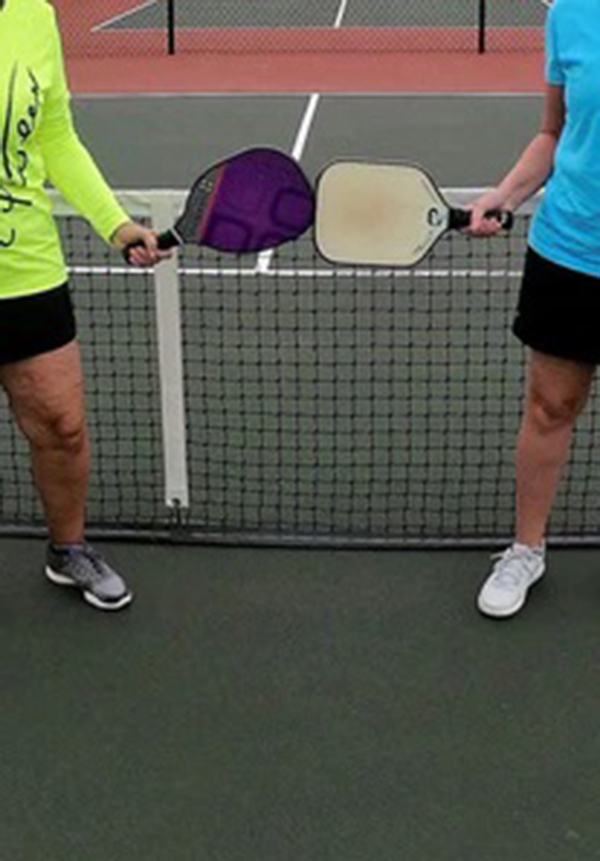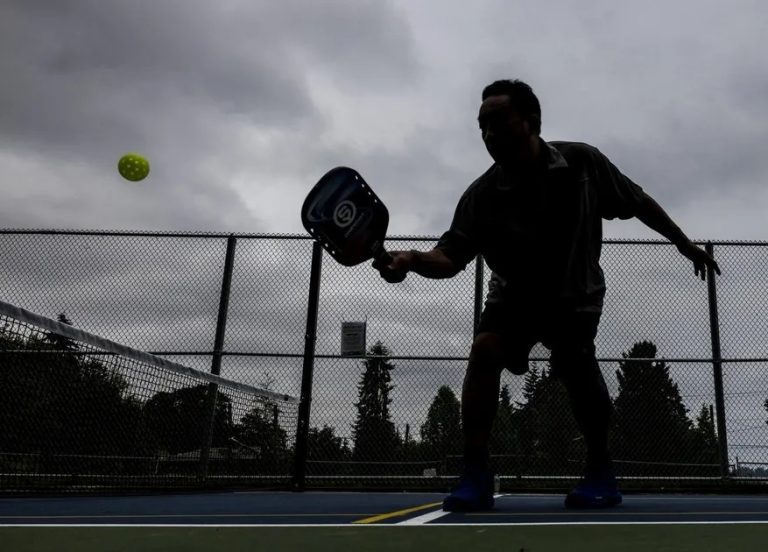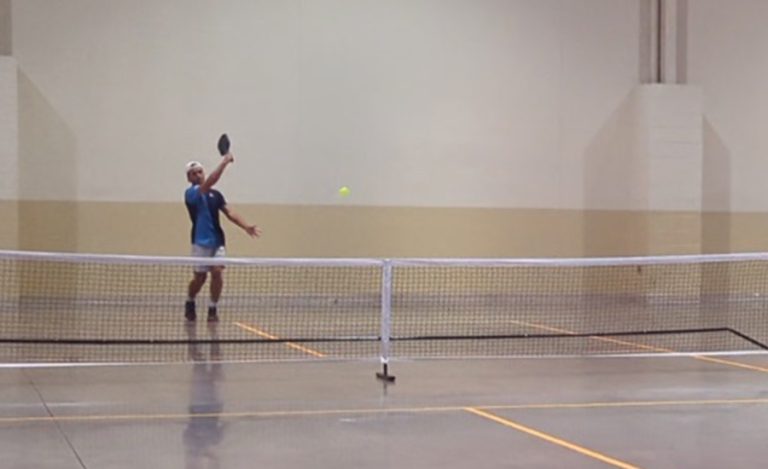Improving Consistency in Pickleball
In pickleball, as in any sport, improving consistency and work ethic are key to enhancing your game. The ability to hit quality shots consistently can be the difference between winning and losing a match. This comprehensive guide will delve into the importance of improving consistency in pickleball and work ethic, providing you with the insights to enhance your game and become a more consistent player.
The Importance of Improving Consistency in Pickleball
Consistency in pickleball refers to the ability to hit quality shots time and time again. This means not only making your shots land within the court but also placing them where you want and with the desired spin and speed. Improving consistency in pickleball can make the difference between winning and losing a match.
Developing Consistency in Pickleball
Developing consistency in pickleball requires a strong work ethic and regular practice. Here are some tips to help you become a more consistent player:
Drilling
Drilling is a crucial part of developing consistency in pickleball. This involves practicing specific shots or sequences over and over until they become second nature. For example, you might drill your serve by hitting hundreds of serves in a row, focusing on placement and power.
Drilling Techniques for Improving Consistency in Pickleball
Good technique is the foundation of consistency. Make sure you’re using the correct grip, stance, and swing for each shot. Consider working with a coach or using video analysis to improve your technique.
Playing Matches
While drilling is important, there’s no substitute for playing actual matches. Matches give you the opportunity to apply your skills under pressure and against different types of opponents.
The Role of Work Ethic in Improving Consistency in Pickleball
Work ethic is what drives you to practice regularly, focus on your technique, and strive to improve. A strong work ethic means not only working hard but also working smart. This involves setting goals, creating a practice plan, and seeking feedback to improve.
Maintaining a Positive Attitude While Improving Consistency in Pickleball
Even with a strong work ethic, you’ll face challenges and setbacks. It’s important to maintain a positive attitude during these times. Remember, improvement often comes slowly and requires patience. Stay positive, keep working hard, and your consistency will improve over time.
Improving consistency in pickleball and work ethic are key to enhancing your game. By practicing regularly, focusing on your technique, and maintaining a positive attitude, you can become a more consistent player and elevate your game to new heights. So, keep these tips in mind, practice regularly, and watch your game improve.
The Importance of Improving Consistency in Pickleball
Consistency is a key factor that separates good players from great ones. Consistent players make fewer unforced errors than their opponents.
Mindset
It is very important to understand why you commit unforced errors and then overcoming them by using smart and repeatable mechanics and processes.
The 80 Rule
Instead of trying to hit every shot perfectly, it’s better to aim for shots that you can repeat successfully 8 out of 10 times. This approach helps in minimizing unforced errors.
Active Patience
Patience is crucial in pickleball. Rather than waiting for your opponent to make a mistake, employ active patience by constructing points with smart and consistent shots that put pressure on your opponent. Take advantage of the opportunities when they arise.
Repeatable Mechanics
Some key mechanics include:
- Keeping eye contact with the ball all the way to the paddle’s contact point.
- Minimizing head movement to maintain focus on the ball.
- Using the shoulder as the primary director of motion for stable and controlled swings.
- Aiming two to three feet in from the sidelines for higher consistency.
- Respecting the net and giving ample margin for error in shots.
Optimal Contact Zone
Keeping the ball out front in the optimal contact zone leads to easier shots and higher success rates. Avoid letting the ball get behind you, which can result in pop-ups or errors.
Footwork
Proper footwork is critical for consistency. Avoid unnecessary steps that can throw off your balance. Beat the ball to the spot, set your feet, and then swing.
Drills and Muscle Memory
Drilling and building muscle memory for different shots is important for consistency. One suggested drill involves counting the number of unforced errors instead of tracking points to highlight areas for improvement.
The Importance of Reducing Stroke Mechanics Variability
Reducing variability in stroke mechanics is crucial for improving consistency. A repeatable and consistent stroke mechanic is desired to perform well in pickleball.
Using the Shoulder as the Primary Driver
Players should use their shoulder as the primary driver of their paddle. Moving the paddle primarily with the shoulder reduces variability and minimizes mistakes. Using the elbow or wrist as the primary driver introduces more variability and increases the chances of errors.
Demonstrating the Correct Motion
The pendulum swing, which is driven from the shoulder. The shoulder acts as the hinge, and the swing is simple, compact, and repeatable. Excessive motion from the elbow or wrist should be avoided.
Tension in the Arm and Wrist
Players without a racket sports background may tense up their arm, believing that they can’t move their elbow and wrist. It is important to allow flexibility in these joints while primarily using the shoulder as the driver.
Avoiding Wrist Fixes
Players often try to use their wrist to compensate for stroke issues, which can create more problems. Instead of relying on the wrist, players should focus on adjusting their contact point with the ball.
Ideal Contact Point
The ideal contact point with the ball is at about a 45-degree angle for the paddle. Contacting the ball too low leads to hitting into the net, while contacting it too high results in the ball going too high.
Demonstrating the Correct Dinking Motion
The proper dinking motion, with the paddle being moved from the shoulder. Excessive motion from the elbow or wrist can introduce variability and lead to mistakes.
Point of Contact
The sweet spot for dinking is around a 45-degree angle. Hitting the ball too late or too soon affects the trajectory and height of the ball.
Using a Camera to Check Technique
Using a phone’s camera or a tripod to record one’s pickleball strokes. By reviewing the footage, players can observe if they are using the shoulder as the primary driver or relying too much on the elbow or wrist.
Compact Strokes
The need for compact strokes instead of taking the paddle back too far. Since pickleball is played on a smaller court, there is no need for excessive backswing. By keeping the paddle out in front, players can achieve faster hands and maintain consistency.
Establishing a Repeatable Process for Improving Consistency in Pickleball
Consistency is achieved through a repeatable process. Watching the ball and avoiding a big backswing are key components of this process.
Drill
A drill to practice compact strokes. The players stand close to each other, even at the kitchen line, and volley back and forth with small strokes. They gradually increase the distance while maintaining the compact strokes, reinforcing the idea of controlling the backswing and paddle movement.
Benefits of Compact Strokes
Compact strokes help players maintain control, have faster hands, and be more consistent in their shots.
The Goal of the Serve
Many players think the objective of the serve is just to get it in, but there’s more you can do with your serve.
Improving Consistency and Accuracy in Pickleball
When serving, it’s important to aim for consistency and accuracy.
Simplify Your Motion
To achieve consistency, keep your serving motion simple and minimize unnecessary movements.
Foot Positioning
Load and lock your front foot into the ground. This acts as an anchor, allowing you to push off and transfer your weight from back to front.
Ball Placement
Drop the ball away from your body, ensuring it’s not too close to you. By releasing the ball in this manner, your contact point will be into the court, leading to a more effective serve.
Select a Target
Before striking the ball, pick a target on the court. Having a specific target in mind improves your aim and overall performance.
Repeatable Shot
Aim for consistency by hitting the same shot every time. This includes having your foot down, releasing the ball, and following through consistently.
Long Follow-Through
Allow your follow-through to be long and natural. The follow-through should extend towards your target, helping guide your shot accurately.
Improving Consistency in Pickleball in Practice and Matches
The same technique and form used in practice should be carried over into matches. Maintain a consistent strike zone, release the ball correctly, and focus on a proper follow-through.







